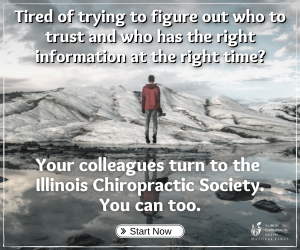
How to Increase Your Referrals from Medical Providers

Statistics consistently report that low back pain is one of the most common complaints mentioned during a patient’s visit with a primary care provider (PCP). Although chiropractic care is an effective treatment option for this condition, referring patients with back pain to your office may not be the first thing on that doctor’s mind.
Research Referral Patterns
Before starting a networking plan to meet your local health care providers, you need to do a little research on what the common referral patterns are in your area and how you might be able to solve problems for the local PCP. Taking this approach will allow you to be the “hero” to these professionals, instead of a controversial chiropractor who says that everything the M.D. does for spine pain patients is wrong!
For instance, you need to find out who is actually seeing patients with back pain at the local PCP office. Is it the doctor? Or perhaps a nurse practitioner or physician’s assistant? Maybe a majority of the local women see their OB/Gyn or Midwife for primary health concerns. Find out who your target individuals are. Depending on your area, you may have to open up the mileage radius to develop a large enough list. In other metropolitan or urban areas, your list may be restricted to a few blocks or miles. In the past, I have found a list of 35-50 professionals drawn from the area where my patients usually see their doctors is about right. You can use Google or provider directories for this information.
Insurance Plans Serviced
The next step is to find out what insurance plans each office serves and what the payer mix looks like. You can start this search online on either the office’s website or by searching through the provider directories. Next, you can call and speak to the front desk. Explain that you are calling from your office and have patients in common with them. Ask them which plans they are in-network with and if they primarily focus their care with one company. This will allow you to know if they primarily see patients in a plan with which you are not in-network or that does not cover chiropractic (such as Medicaid).
If you obtain PCP information from your current patients, compare the names they give you to the providers on your list. If there is a PCP in the area that sees a lot of your patients already, the PCP might be a good place to start your networking. You can use your common patients as a way to get your foot in the door and start a conversation. If you do not have PCP information from your patients, I would start your networking with whichever office seems to best fit your payer mix and mission. (P.S. If you are not gathering PCP information from your patients, start doing it! Send a copy of all exams by fax to the PCP so you can keep them informed and also let them know you are successfully treating and releasing their patients!)
Networking
Depending on your time constraints, you can now start networking with these providers by sending an introduction letter followed by newsletters, or visit with them in their office over breakfast, coffee or lunch. In my office, I used to be able to meet doctors and cater them lunch. As my practice became busier, I couldn’t take 2 hours of my time out during the middle of the day. Instead, I stayed connected through monthly newsletters. If you have a new practice, the in-person meeting is a great extra step.
To schedule a meeting, call the provider’s office and ask to speak to the person in charge of scheduling lunches. This is a common thing in the medical field. Next, explain who you are and tell them you would like to meet with the providers. Be clear on who will be at the lunch and make multiple lunch dates to meet all of the providers, if necessary. Find out if there are any allergies and also see if there is a type of food they like. Before the lunch meeting, call to confirm with the office and make sure you bring business cards, brochures or any other materials you have prepared for medical providers with you to the meeting.
Lunch Meeting
Preparing for the lunch meeting is challenging because you never know what they are going to ask or where the conversation is going to go. Just make sure you make the meeting about them, find out how they currently manage their back pain patients and what struggles they may be having. You might get on a tangent commiserating with them about EHR — you never know! Be prepared to answer basic questions about the effectiveness and safety of chiropractic care. They may also ask you about your education or if patients need a referral to see you (like they do with physical therapy). Having a membership with the Illinois Chiropractic Society helps you answer some of these types of questions about scope, safety or insurance coverage for care. They might ask you about long-term treatment plans or about vaccinations. Remember the cardinal rule of networking — people refer to those they like, know and trust. Don’t disrespect their profession or beliefs, and instead share ways you can help make their job easier. Let them know that you’ll be staying in touch by mailing them periodic research briefs or a newsletter so they know to expect it.
After the meeting, make sure you send them a thank you card. I suggest something handwritten and addressed, with a postage stamp. That will make it to their desk. Make sure you start sending them a periodic newsletter or research brief. Monthly intervals are commonly suggested. You may want to write a little note on the first one or so, to make sure they remember you. If you have a patient that is referred by them or happens to have them as a PCP, you can make that a reason to write a note, as well.
Turn-around Time
If you don’t immediately start seeing patients from a PCP that you have sent materials or provided a lunch, don’t dismay. Sometimes it takes a couple of months or another brief meeting to get things going. They also might have concerns, insurance coverage problems or company referral rules preventing them from sending patients to you. Try to uncover those, and resolve them, if possible. There are a few large medical groups in my area that refuse to refer to outside providers. I send exam notes to these PCP’s but do not waste my time and money buying them lunch or sending them newsletters.
Once you gain the trust of local PCPs, they can be a steady flow of referrals for years. I suggest starting your contact by letting them know about how you can help their back pain patients, and then branch out to other spine pain, headaches or whatever your niche is as you gain their trust. Nurture the relationship, and respect them as a fellow healthcare provider. There’s no need to be nervous when speaking with them. They are just like you and me with the same wants, needs, and fears. Just be kind, understand that their viewpoint might differ from yours, and see this as an opportunity to help more patients receive natural, drug-free health care.

















